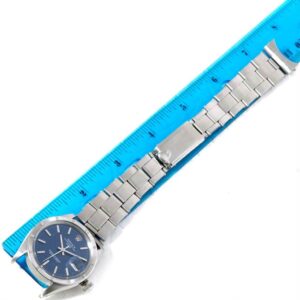Rolex Reimagines Breguet for the Modern Natural Escapement
The escapement reigns as the unsung hero – a delicate mediator between raw energy and precise timekeeping. Its dual mandate – regulating power release while sustaining the balance wheel’s rhythm – has long tested horological ingenuity. For centuries, the Swiss lever escapement has dominated, not for perfection but for practicality. Its flaws – dependency on lubrication, sliding friction – are tolerated because alternatives, though theoretically superior, falter under industrial demands. Enter clone Rolex, a brand synonymous with precision, now venturing into uncharted territory with a patent that reawakens Abraham-Louis Breguet’s 18th-century vision: the natural escapement.
Bridging Centuries: From Breguet’s Dream to Rolex’s Blueprint
Breguet’s échappement naturel was a marvel of its era, delivering dual direct impulses to the balance wheel per oscillation – eliminating lubrication needs while enhancing efficiency. Yet, its complexity proved prohibitive. Twin escape wheels, intricate gearing, and sensitivity to shocks confined it to pocket watches and prototypes. Modern attempts, like Laurent Ferrier’s nickel-phosphorus wheels or F.P. Journe’s titanium-levered EBHP, showcased progress but remained niche, hamstrung by inertia, laborious assembly, and a lack of self-starting reliability. 
Rolex’s patent, however, signals a shift. Known for industrial rigor – evident in their Chronergy escapement’s mastery – the brand now reengineers Breguet’s concept for the wrist. The filing reveals two designs: a layered nickel-phosphorus wheel system and a single-plane silicon variant. Both prioritize robustness and scalability, addressing historical weaknesses through innovative geometry and materials.
Decoding the Patent: Precision Meets Pragmatism
At its core, replica Rolex’s design retains the natural escapement’s hallmark – tangential impulses that avoid sliding friction – but introduces a lever as mediator. This subtle pivot from Breguet’s direct-impulse approach enhances control. In the first configuration, escape wheels operate on separate planes, their four-armed locking teeth engaging a concave-lever surface. This curvature minimizes energy loss during unlocking, a detail reflecting Rolex’s obsession with efficiency.

As the balance wheel oscillates, its pin interacts with the lever, triggering a cascade: one escape wheel unlocks, delivers impulse via the lever, then relocks as its counterpart takes over. The second configuration simplifies further, embedding locking teeth and drive components within a single silicon layer – akin to Ulysse Nardin’s Freak escapement – leveraging DRIE microfabrication for precision without manual adjustment.
Crucially, Rolex’s design hints at self-starting capability. By timing impulses earlier in the lever’s travel (50°-70° versus a 60°-80° locking angle), even minimal balance motion can restart the mechanism – a historic hurdle overcome.
The Bigger Horizon: Why Rolex?
The question lingers: Why pursue Breguet’s finicky design when the Chronergy escapement already excels? The answer lies in fundamentals. While Chronergy refines the Swiss lever with optimized angles and lightweight materials, it still relies on lubricated pallets. Rolex’s patent, by contrast, eliminates oil entirely – a holy grail for longevity and accuracy.
Moreover, this venture aligns with Rolex’s ethos: incremental, foundational innovation. The Chronergy wasn’t a revolution but an evolution, honed over years for mass adoption. Similarly, a production-ready natural escapement could redefine standards, merging antique elegance with modern resilience.

A Glimpse into Tomorrow’s Mechanics
Rolex’s patent is no guarantee of a market-ready movement. History brims with shelved blueprints. Yet, the mere act of reengineering Breguet’s escapement – a mechanism once deemed “impractical” for wrists – speaks volumes. It underscores a relentless quest for horological purity, where even centuries-old ideas are resurrected and refined.
Imagine a Rolex movement, oil-free and high-beat, its heart beating to the rhythm of Breguet’s 18th-century genius – now reborn through 21st-century engineering. It’s a reminder that in watchmaking, the future often whispers through the past.